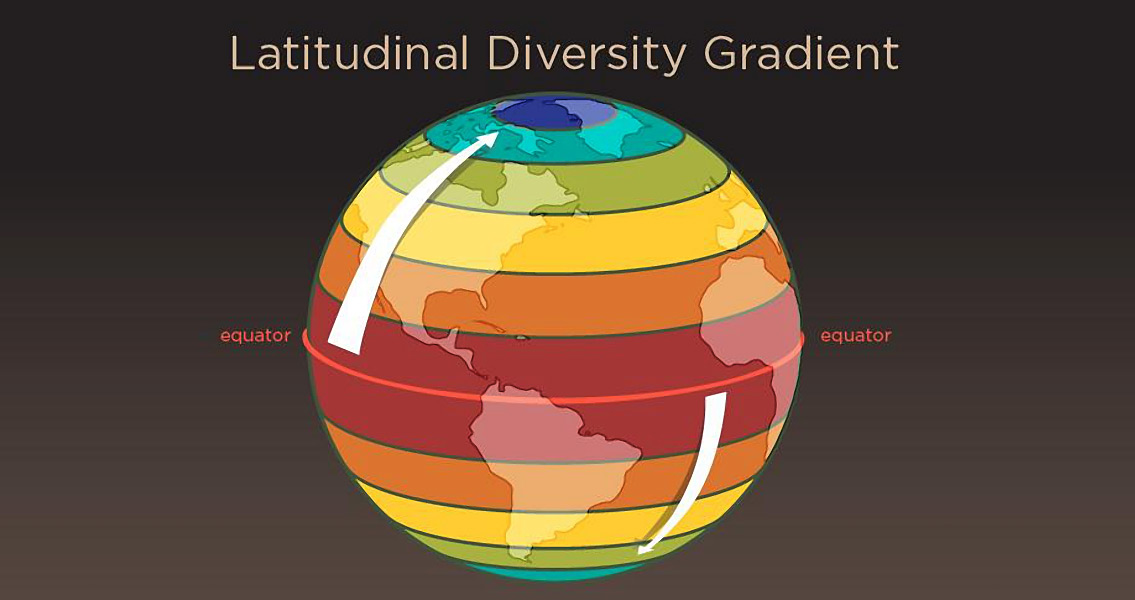<![CDATA[It’s known as the Latitudinal Diversity Gradient (LDG) - the phenomenon of decreasing biodiversity from the equator to the higher latitudes, as seen in a majority of animal and plant species worldwide. Now, research of fossils which represent 63 million years out of the past 65 million has revealed that for mammals in North America, the LDG is the exception as opposed to the rule. In a press release from the University of Illinois, animal biology professor Jonathan Marcot explains that the theory behind the LDG says that there are a larger number of species at the equator then there are at the poles, and it’s considered a widely accepted ecological pattern. A pattern you’d expect to find in insects, birds, and plants, on land and in the ocean. It seems obvious, in fact, that you would find more species in the lower latitudes where it’s warmer. A planet that’s warming, however, doesn’t necessarily mean more diversity everywhere. It might lead to a shift or expansion of the range of an individual species without a corresponding increase in their total number. Looking back just a few thousand years to a time before the loss of many of the large mammals which once inhabited North America, there were species like horses and mammoths in the higher latitudes for millions, and even tens of millions of years. Species typically found in southern latitudes today, could be found in northern ones as well. The research team used the Paleobiology Database for fossil information, including their age and the latitudes where they were found. According to what Marcot says in the press release, the North American fossil record for mammals is one of the best, if not the best-sampled record for this type of analysis. They compared the diversity of mammal species at each latitude and each time period for which there was enough available data. They also looked at diversity in relation to temperature changes which occurred during the same time. What the study found is that from 65 million years ago up to 10 million years ago there was no evidence of an LDG for mammals in North America; there were on average as many species of animals in the northern as in the southern regions of the continent. By analyzing the ratios of oxygen isotopes of the bones, they found evidence showing the temperature gradient in the Paleocene era was much like the temperature gradient of today. From 10 million to 4 million years ago, however, the LDG began to strengthen, and beginning approximately 4 million years ago they found more species in the south latitudes than in the north. The researchers analyzed the gradient as it related to temperature changes as well, and found a significant relationship between the diversity gradient and temperature, which means the colder it is, the stronger the gradient gets for mammals of North America. The research was funded by the National Science Foundation and published in the Proceedings of the National Academy of Sciences. ]]>
Past Biodiversity Patterns Different to Today's
